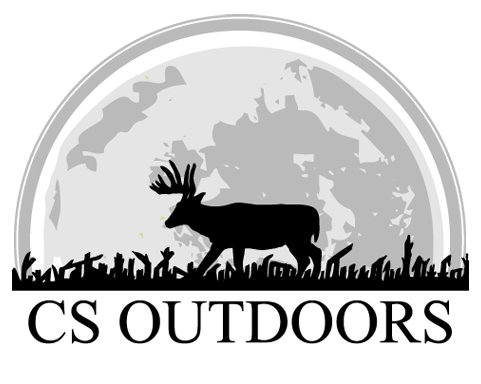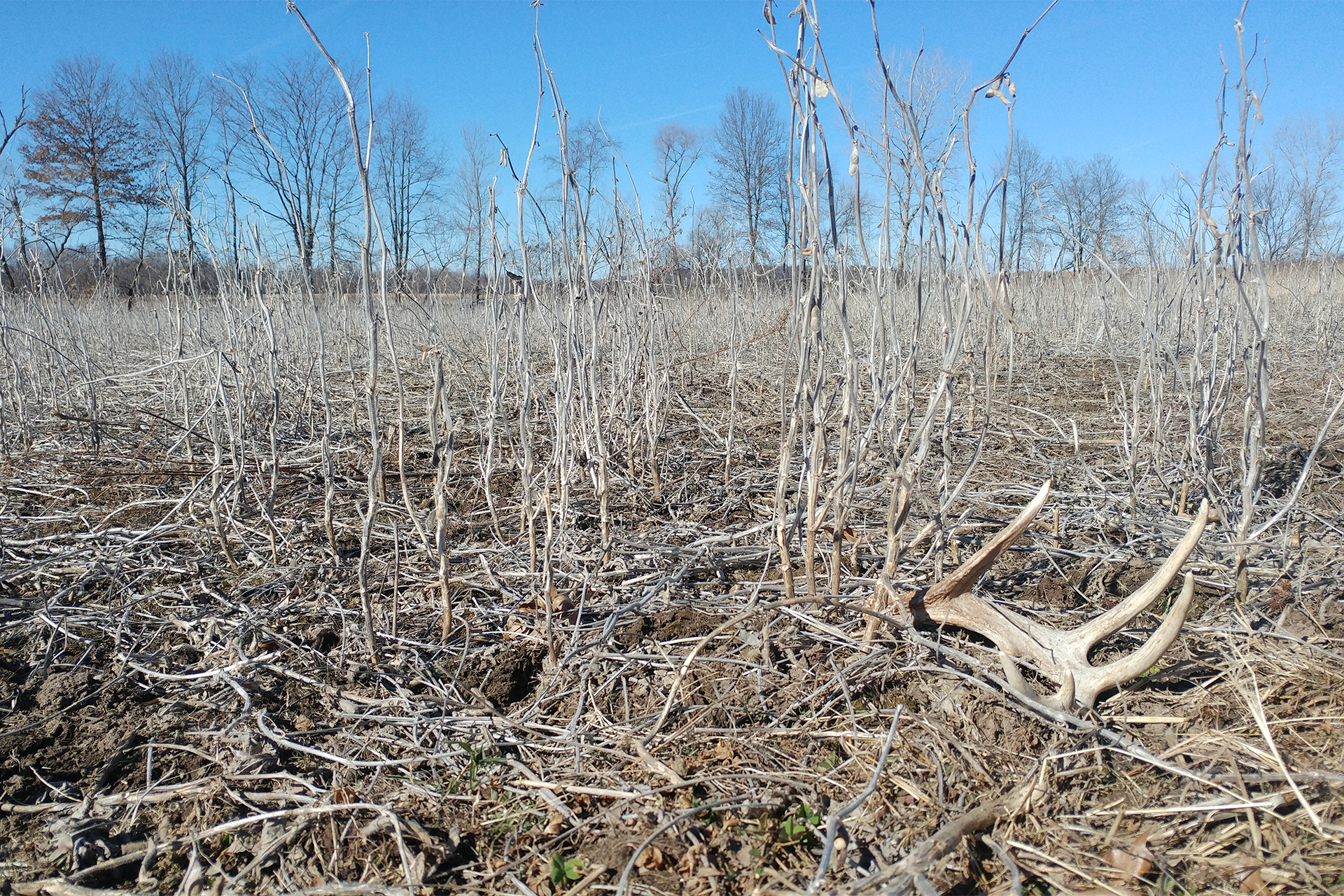For most avid whitetail management junkies, the month of February is one of waiting, restlessness and bittersweet reflection of the past season. We become restless with the urge to once again enter the field to pursue whitetails, we wait for our trail cameras to show us that our bucks have shed their antlers and we reflect on both the whitetails we lost during the season & those that survived who fill us with the anticipation of pursuit for next season.
The culmination that resolves the ‘whitetail management junkie’s melancholy’ is the time we all choose to begin our SHED SEASON. And while I personally feel that most hunters, and some WMJ’s, begin their shed season far too early, I can certainly respect the urge, need and passion that drives people to want to enter the field to once again pursue whitetails. The discussion for “WHEN” to begin your shed season can be argued at a later time however, this article is meant to help with the search tactics that can help you produce better results with your shed hunting.
For many who have jobs, families & kids, sports and other personal obligations, the amount of days to enter the whitetail world are limited to a select few. Focusing on certain locations while shed hunting can help maximize your shed hunting success, in order to find the whitetails that survived the season, so that you can begin to prepare for their pursuit for the upcoming season.
Here are CSO’s Top 10 ‘Locations To Help Maximize Your Shed Hunting Results’:
(Ranked in order, by CS Outdoors, from locations we have experienced the most shed hunting success with on 15 different managed properties across Missouri & Iowa)
WATER SOURCES
This location may not be the best for finding actual sheds, but it does provide great benefit to accomplishing the main goal of most WMJ’s shed season, and that is to find what deer survived & what deer didn’t. Injured, sick or fatally shot animals will usually travel to water sources or creek edges to try and heal themselves. Walking these creek edges and water sources may not be the best location to find sheds, but they are the best locations to find skulls and skeletons of animals who perished during the season.
PASTURE
Although we do not spend a lot of time searching pastures for shed antlers, we have definitely found that they should not be overlooked or passed over. During late season, pastures can be one of the last remaining “green” food sources for whitetails. As well, during the early stages of spring, pastures can be one of the first “green” or “growing” food sources for whitetails. These pastures can especially hold added value if they have patches or prevalent clover in them. One of the best parts of searching pastures for shed antlers is that it is easy and doesn’t involve a lot of walking. Getting to the highest or best viewing point to view a majority of the pasture, then glassing with quality optics provides a simple and effective way to comb pastures for shed antlers.
CRP/NATIVE GRASS
CRP & Native Grass locations are typically large and hard to search, they require added attention to detail and usually a handful of trusted hunting partners. These areas however, should also not be overlooked. CRP & Native Grass provide great bedding & cover for whitetails, and they typically like to spend a fair amount of time in these areas in the winter months. This provides the increased probability that sheds will be dropped in these areas. Some advice to most effectively search CRP & Native Grass fields for shed:
Search with a small, trusted group. Pay extra attention to details and walk slow, looking 180 degrees 5ft-10ft in front of you. Use a shed hunting dog, if available.
SOUTH FACING SLOPES/BLOWDOWNS
South Facing Slopes & Blowdowns are probably the most overlooked locations when searching for shed antlers. During heavy & cold north winter-winds, whitetails will seek warmth and shelter from the wind on south facing slopes (usually the upper terraces) & blowdowns in the same south facing slope locations. On particularly cold winter seasons with a lot of cold, north wind fronts, south facing slopes can be some one of the most productive locations for finding shed antlers.
HEAVILY TRAVELED TRAILS
Most people, while shed hunting, walk aimlessly throughout the woods searching for shed antlers. The most experienced, and successful shed hunters will find heavily used and fresh deer trails to guide their search for sheds. It is a simple theory really, paths and corridors that deer travel on a more frequent basis are the ones more likely that they will shed their antlers while traveling on. An added benefit to searching and walking Heavily Traveled Deer Paths and Trails is the learned (and sometimes documented) knowledge of how deer will travel and use your property. The best WMJ’s will carry maps and diagrams with them to chart their findings and scouting.
HONEY LOCUST & OSAGE ORANGE TREES (‘BANANA PODS’ & ‘HEDGE APPLES’)
These two species of trees are what we find to be our “hidden gem” locations for shed hunting, and we find them especially true when these areas or patches of trees are enclosed with surrounding grass and thickets. After the ag fields have been harvested, and the food supply in food plots and other food sources have been expunged, ‘hedge apples’ & honey locust ‘banana’ pods often are some of the last remaining food sources available to whitetails late into the winter months. For this reason, many whitetails will tend to shed in these locations as they search for food produced from these trees. These thickets can also tend to be located next to Cedar thickets, providing a unique blend of bedding, cover and an alternative food source.
CEDAR THICKETS
During heavy, cold winter-winds, or periods with heavy snow and ice, whitetails often seek refuge and shelter in cedar thickets and densely populated areas of pines, firs & spruces. Because of the time spent in these areas late into the winter months, cedar thickets are some of the top locations to find shed antlers. They are especially productive when they are accompanied with grown up grass and brush that provides whitetails extra warmth and bedding. We have personally found that these areas will be the locations that we have picked up our larger antlers as well, whether or not that is just coincidence, we cannot say for certain.
FENCE LINES & FIELD EDGES
Fence lines & field edges are by far the most popular locations to search for shed antlers. One, because they are very easy to walk, and two, because antlers are typically easier to find in these locations. As bucks enter a field or walk along a field edge, they most often will take the time to rub their antlers against something or stop to shake their heads back and forth (the reasoning behind this can be debated). In the same manner, when a deer goes to leap a fence, the inertia can be enough to jar antlers loose. In either case, these motions or activities latein to the winter months, and early in the spring months can make walking fence lines and field edges a very productive endeavor for shed hunters. We particularly like to save ourselves the effort & added miles on our legs while searching field edges and fence lines, and we will often utilize atv’s and utv’s to search these areas. Atv’s can provided a needed rest from walking and can save needed time and effort for those with limited time during the shed season months. These are particularly great locations to walk, or ride, with youth who are interested in shed hunting or who you would like to introduce to the activity.
FOOD PLOT & FOOD SOURCES
A quote that I never hesitate to pass along to those who inquire about quality whitetail management is “The man with the most food wins.” This quote rings true in almost every aspect of helping to hunt and manage whitetails…and shed season is no different. It is no secret that whitetails are slaves to their stomachs, with the exception of about a 2-3 week window for the rut. As winter takes effect on the earth, food sources and vegetation become extremely scarce on most properties. For this reason, whitetails can travel long distances to find available food sources to last them through the winter. Many bucks, especially dominant bucks, will stake their home range very close to available food sources and usually will not leave that area until the food source is gone, or until winter has passed. Therefore, if your property has a standing food source or a regular provision of food being supplied to the herd, the more bucks you will have lingering in your area. If there are standing or available sources of food on your property in the months of February and March, you will find sheds.
*An added benefit to keeping standing food sources or food provisions to your whitetails during the winter months is that it will decrease the stress of your herd, in turn producing healthier whitetails. (Which in turn, can produce better antler growth)
BEDDING AREAS
Bedding areas are by far the most productive location that we find the majority of antlers on every property that we manage across the Midwest. The reasoning behind the success of these areas is pretty simple, and one that wouldn’t take a rocket scientist to figure out. Whitetails spend a lot of time in their bedding areas during the winter months. Bedding areas provide cover, warmth and security that all make whitetails feel safe. Therefore, the place where they spend their most time, is the place you will find what they leave behind, usually antlers and excrement. Personally, when I am searching a bedding area and I find fresh deer feces, I become especially amped up for my antler search. Sounds sick, I know, but usually areas with fresh deer excrement will mean that deer are using and bedding in that area…and a shed is usually not too far away. Bedding areas are locations we feel many people dive in way too early in the beginning stages of their shed season. They are in fact the LAST area that we dive in to on all of our properties.
Going in to bedding areas too early and bumping deer may not seem like a big issue to most, mostly because it is out of actual hunting season. But in fact, it can do a lot of harm to our shed hunting efforts, especially if our whitetails haven’t shed yet. I don’t think anyone would argue that we don’t want to push a whitetail we have been pursuing all season, who hasn’t shed yet, on to the neighbor’s property and offer them the opportunity at picking up that buck’s sheds.
During the winter months, we want our whitetails to feel safe and secure, not pressured and spooked. Pressure and spooked deer, are stressed and flighty deer. Two things that no WMJ wants his whitetails to be.
Paying strict attention to Trail Cameras during the late season, waiting until 80%-90% off your buck herd has shed and then diving in to bedding areas when the time is right is our key to a successful & productive shed season.


Hi, this is a comment.
To get started with moderating, editing, and deleting comments, please visit the Comments screen in the dashboard.
Commenter avatars come from Gravatar.